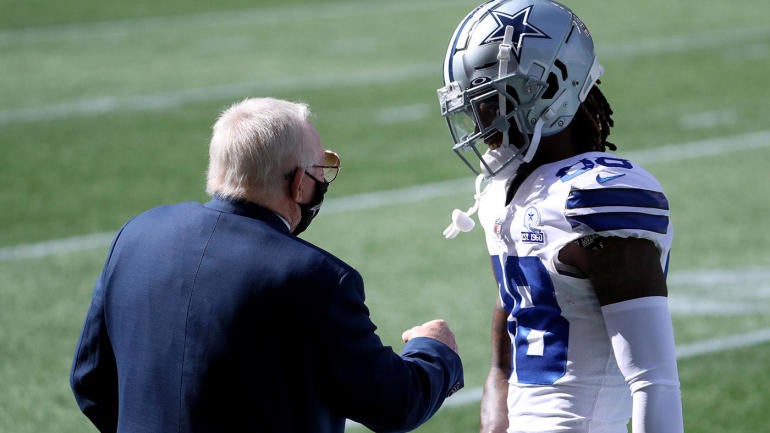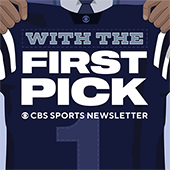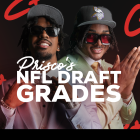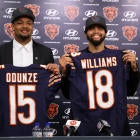
Contract negotiation drama is a way of life for the Dallas Cowboys. The latest potential drama involves CeeDee Lamb, who is scheduled to play under a fully guaranteed $17.199 million, fifth-year option in 2024.
According to the Dallas Morning News' Michael Gehlken, Lamb isn't expected to attend the start of the voluntary portion of the Cowboys' offseason workout program on April 15 and could hold out of training camp without a new contract. When asked general questions about his future by TMZ at a sports memorabilia show in Chantilly, Va., on Monday several hours after Gehlken's report, Lamb said, "Yeah, I'll be in Dallas." Whether Lamb will skip the voluntary workouts, the mandatory minicamp to be held June 4-6 and/or the start of training camp weren't specifically addressed in the brief interview.
Precedent matters
During my days as an agent, a client being absent from team activities, especially early in the offseason, wouldn't occur as long as sufficient progress was being made on a new contract. Lamb reportedly contemplating missing the beginning of the workout program suggests to me that negotiations either have been difficult or are proceeding at a slow pace.
I also paid close attention to an NFL team's history in contract disputes when evaluating what tactics to use in a negotiation. For example, there would have been reluctance to have a client withhold services when dealing with the Seattle Seahawks because of Kam Chancellor's and Earl Thomas' situations. Chancellor held out 54 days in 2015 before returning to the Seahawks without any changes to his contract.
Thomas missed all of training camp and the preseason in a 2018 holdout he ended four days before the regular-season opener. Just like Chancellor, Thomas' holdout didn't result in him getting a new deal. He played out his contract and left Seattle in 2019 as an unrestricted free agent.
There hasn't been front office turnover that could change the calculus since the two safeties' failed attempts at forcing Seattle's hand. John Schneider has been general manager since 2010.
The Cowboys are at the opposite end of the spectrum from the Seahawks. Running back Ezekiel Elliott's 39-day holdout in 2019, when he had two years remaining on his rookie contract, led to him becoming the NFL's highest-paid running back. Elliott received a six-year, $90 million contract extension, averaging $15 million per year. New standards for running backs of $50,052,137 in overall guarantees and $28,052,137 fully guaranteed at signing were also established with the deal.
Cowboys owner Jerry Jones talked a good game when perennial All-Pro offensive guard Zack Martin held out last preseason because he felt underpaid relative to the changing market conditions. Initially, Jones was adamant about not addressing Martin's contract. "He'll come to camp when he comes to camp," Jones said. "There's no resolution. There are a lot of consequences if he doesn't. … He's been at the top of the money all the way through, drafted high and got a lot of money, got a lot of money over the years. It's just hard to get it all. The bottom line is, nothing needs to happen."
Something did happen during the middle of August a couple days after the Cowboys' first preseason game. Martin got a raise. Scheduled to make $27.5 million over the remaining two years of his deal running through the 2024 season, Martin's contract was reworked for him to make a fully guaranteed $36.85 million instead. Martin, who turned 33 in November, had a previously unsecured 2024 base salary become fully guaranteed in his renegotiated contract.
The Cowboys dragging out negotiations with Lamb is pointless. Recent history suggests that Jones should cave to Lamb's contract demands as soon as possible. Jones is going to eventually anyway if Lamb "sticks a gun to his head" through a training camp holdout. Jones having the resolve to reverse the precedent he set with Elliott and Martin would be a major surprise.

With The First Pick Newsletter
With The First Pick Newsletter
Prepare for the upcoming NFL Draft with the day’s big stories + mock drafts, big board updates and more.
Thanks for signing up!
Keep an eye on your inbox.
Sorry!
There was an error processing your subscription.
Potential Lamb negotiation sticking points
Lamb wanting to become the NFL's highest-paid wide receiver would be justified after his performance last season. Lamb had the greatest receiving season in Cowboys history with 135 catches for 1,749 yards and 12 touchdowns in 2023. His 135 receptions not only led the league but were the sixth-most ever in an NFL season. Lamb was second and third in the NFL, respectively, in receiving yards and touchdown catches.
As a far as Lamb is concerned, Tyreek Hill is the league's highest-paid wide receiver. On paper, Hill became the NFL's first $30 million-per-year non-quarterback. He signed a four-year, $120 million extension, averaging $30 million per year, in March 2022 as a part of his trade from the Kansas City Chiefs to the Miami Dolphins.
The extension has $72.2 million in guarantees where a wide receiver-record $52.535 million was fully guaranteed at signing. Realistically, Hill has a three-year extension for $75 million because of $45 million in 2026, the final contract year.
Hill's extension surpassed Davante Adams' deal. The ink was barely dry on the five-year, $140 million contract Adams received from the Las Vegas Raiders a couple of days before when he was traded by the Green Bay Packers after being designated as a franchise player. This deal has $65.67 million in guarantees, of which $42.75 million was fully guaranteed at signing. The maximum value of Adams' contract is $141.25 million because of an annual $250,000 Pro Bowl incentive.
In actuality, Adams has $67.5 million for three years rather than a five-year contract, averaging $28 million per year, because there's $72.5 million over the last two years. It's hard to imagine Adams playing under his 2025 and 2026 contract years for $36.25 million each when he's 32 and 33 years old.
The Cowboys can make a legitimate case that Cooper Kupp is really the league's highest-paid wide receiver at $26,783,333 per year because the Hill and Adams contracts are misleading due to artificially inflated salaries at the back of their deals specifically included for cosmetic purposes. The Los Angeles Rams signed Kupp to a three-year, $80.35 million extension in June 2022. The deal has a wide receiver-record $75 million in guarantees, of which $35 million was fully guaranteed at signing.
A real $30 million-per-year contract could be warranted for Lamb, who earned All-Pro honors last season. Kupp's deal, adjusted for the 22.67% increase in the salary cap over the last two years, is just over $32.85 million per year.
The Cowboys should want to get Lamb done before the Minnesota Vikings sign Justin Jefferson to an extension. A deal should be cheaper without Jefferson already resetting the wide receiver market.
Jefferson, who is slated to play 2024 on a fully guaranteed $19.473 million fifth-year option, turned down in excess of $30 million per year as the start of the 2023 regular season was approaching, according to ESPN's Adam Schefter. He has previously stated that he expects to "break the bank" with his new contract.
Breaking the bank might mean Jefferson has set his sights on becoming the NFL's highest-paid non-quarterback. That distinction belongs to San Francisco 49ers edge rusher Nick Bosa. He signed a five-year, $170 million extension, averaging $34 million per year, last September right before the 2023 regular season started.
The Vikings shouldn't have a problem treating Jefferson like Randy Moss when his rookie contract was extended in 2001 considering Jefferson is arguably the most productive wide receiver in league history through a player's first four seasons. Current Vikings executive vice president of football operations Rob Brzezinski made Moss the NFL's second-highest-paid non-quarterback behind New York Giants edge rusher Michael Strahan. Contract negotiations are still Brzezinski's domain.
Jefferson would need to top the five-year deal, averaging $31.75 million per year, defensive tackle Chris Jones recently received from the Kansas City Chiefs to rank second in the non-quarterback salary hierarchy. Lamb would be hard-pressed to surpass Jefferson but would have more ammunition to join the exclusive $30 million-per-year non-quarterback club than without the deal in the market place.
Contract length may also be a sticking point in Lamb's case. The Cowboys prefer to sign players to big-money extensions that are at least five years long.
The recent trend is for high-end wide receiver contracts to be shorter. Three-year deals or three-year extensions have been the most common length since 2022's explosion of the wide receiver market. Five of the NFL's 10 highest-paid wide receivers by average yearly salary have deals of this length. Adams is the only one who signed a five-year contract or for five new years.
Final thoughts
The odds of Jones making Lamb play out his rookie contract and designating him as franchise player in 2025 are remote. The Cowboys haven't used a franchise tag on any of their first-round picks who were selected after the 2011 NFL Collective Bargaining Agreement created the rookie wage scale. The core players received contract extensions.
One time as with Elliott can be classified as an anomaly. A trend starts developing when happening again like in Martin's case. Jones may have unintentionally opened Pandora's box through his treatment of Martin. Agents of star Cowboys players are going to feel emboldened in acrimonious negotiations because pushing the envelope tactically seems to work. That's unlikely to change until Jones takes a hardline stance in these types of situations.





















